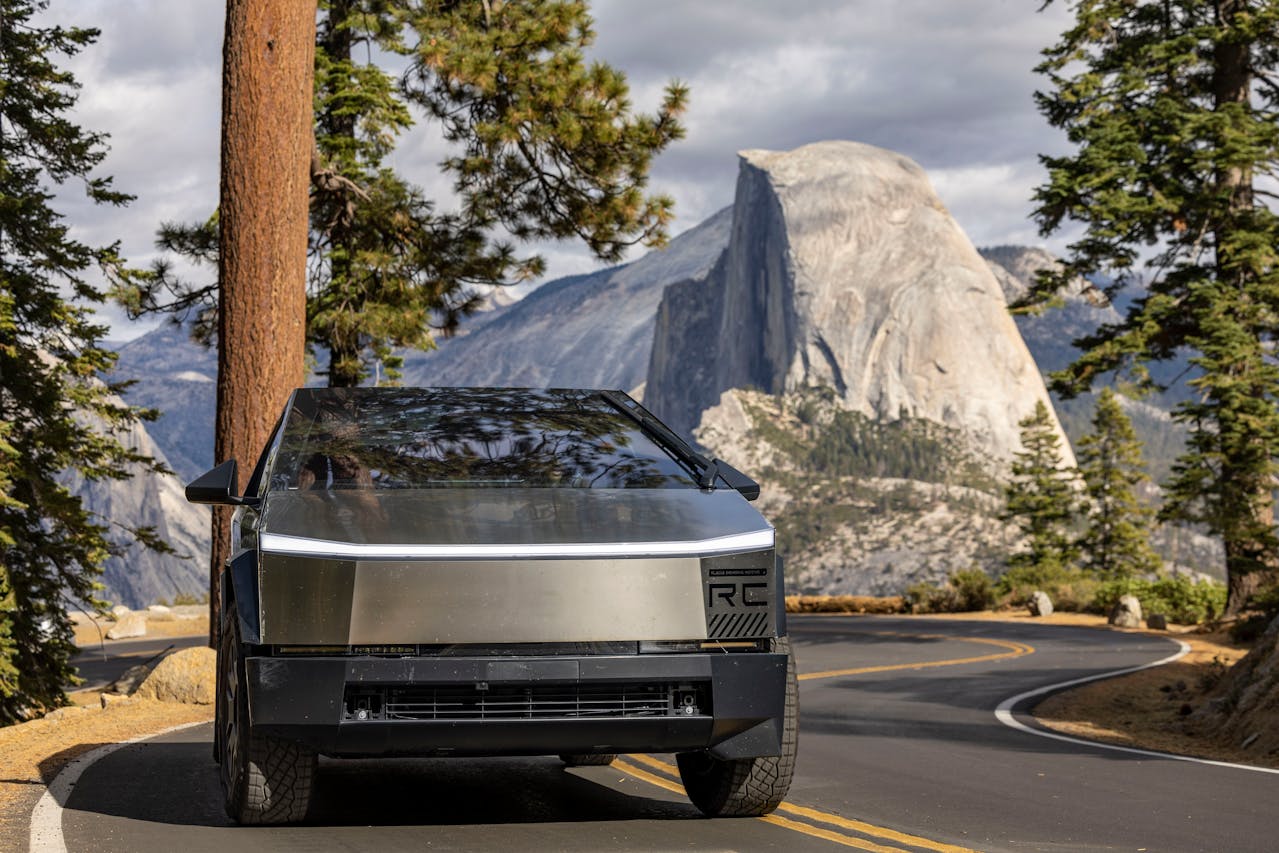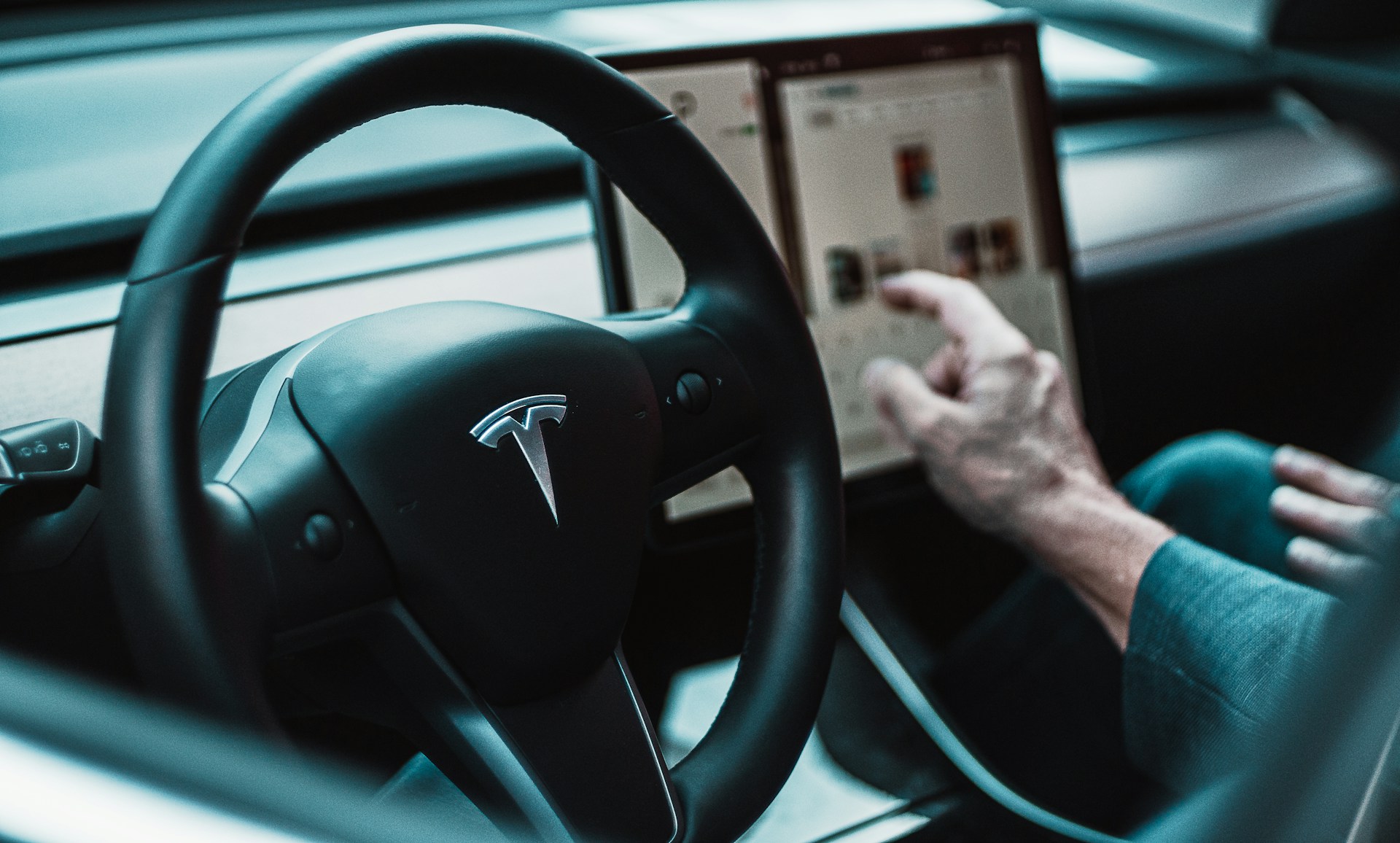Automotive
What Are The Future Of Electric Vehicle?

Electric vehicles are already widely used and will soon rule the world. Electric vehicles are becoming increasingly popular due to a rise in demand for them on a global scale. An electric vehicle doesn’t need fuel, like diesel or gasoline, to operate. Therefore, reducing environmental pollution is made simple by driving electric vehicles. In addition, utilizing less power is another way to cut costs.
If you drive an electric vehicle, you can cut your emissions while saving money. However, an electric car’s spare parts are significant. Therefore, before using an electric vehicle, consumers should confirm that spare parts for electric vehicles are available.
The Major Types Of Electric Vehicles Are Following
Hybrid Electric Vehicle
An internal combustion engine (ICE) and an electric motor and battery pack are combined in a hybrid electric vehicle (HEV) to reduce fuel consumption. Drivers do not need to check the battery charge or plug the cars into power outlets since HEV technology uses a process known as “regenerative braking” to automatically charge the battery and turns on the electric motor system when the conditions are ideal.
Plug-In Hybrid Electric Vehicle
A plug-in hybrid electric vehicle (PHEV) is a vehicle that, like a hybrid, combines an electric motor and battery pack with an internal combustion engine (ICE). However, there have been some substantial alterations. As the electric system handles the work when driving, PHEVs occasionally have larger battery packs and more powerful electric motors than hybrids. However, this suggests that electricity is the only source e of power for PHEVs.
Fuel Cell Electric Vehicles
Fuel cell electric cars (FCEV) and battery electric vehicles (BEV) both use electrical energies to move, but their methods for storing that energy are dissimilar. Unlike BEVs, which use a charger to store electrical energy, FCEVs generate their electrical charge using a chemical reaction that frequently uses hydrogen. Due to their ability to be filled with hydrogen, FCEVs are not dependent on the grid for charging.
Battery-Powered Vehicles
A battery-powered vehicle only requires electricity, and each vehicle’s onboard battery pack powers the electric motors. Due to their reliance on electricity, BEVs often feature batteries with substantially higher capacity and kilowatt-hour (kWh) outputs than equivalent hybrid and plug-in electric vehicles. Because of the added battery technology, BEVs are frequently more expensive than other electric vehicle models. BEVs require charging to function; you can do this by using a rapid charging station or a home charger.
What Elements Are Necessary for an Electric vehicle?
Electric Motor
The central part of a vehicle is the electric traction motor. The electrical energy is transformed into kinetic energy by the engine. The wheels of the vehicle move because of this energy. This technique slows down the motion by converting the moving object’s kinetic energy into another form and storing it for later use. DC motors and AC motors are the two main types of motors.
Electric Vehicle Battery
“Electric Vehicle Battery” (EVB) is frequently used to describe the traction battery pack. The electric vehicle battery acts as a way to store energy, and a traction battery pack lasts about 200,000 kilometers.
DC To DC Converter
The traction battery pack delivers a steady voltage. The output power of the battery is distributed to the necessary level by the DC-DC converter. The voltage needs to recharge the backup battery delivered by it.
Power Inverter
It converts battery-produced DC electricity into AC power. Additionally, it changes the AC electricity produced by regenerative braking into DC. The batteries get recharged using power inverters.
Charging Port
The electric vehicle is connected to an external source using the charging port, usually in front or back. Chargers get used to recharge the battery pack.
On Board Charger
The onboard charger converts the AC source of the charging port into a DC source. An already-installed onboard charger regulates the amount of current that enters the battery pack and keeps track of various battery characteristics.
Controller
Power electronics control an electric vehicle’s operation. It contains how much electricity gets transferred from batteries to motors.
Additional Batteries
Additional batteries provide the electrical power for the accessories in electric vehicles. In addition, the extra batteries will keep the car charged if the primary battery dies.
Cooling System
The main components of an electric vehicle, such as the electric motor, are responsible for maintaining a working temperature, and this responsibility falls on the cooling management system. It functions even when charging for the best performance.
Transference
It transfers the mechanical power from the electric motor to the wheels through a gearbox. The advantage of electric vehicles is that multi-speed gearboxes are not necessary.
Benefits of Electric Vehicles for Us
- Electric vehicles require less maintenance than conventional gasoline or diesel vehicles; Additionally, electric vehicles don’t emit emissions.
- Using electric vehicles may be more environmentally friendly if renewable energy sources power them.
- An electric car significantly reduces working costs. Instead of recharging their batteries with fossil fuels like gasoline or diesel, electric vehicles use electricity. Due to their superior efficiency and higher power costs, electric vehicles are less expensive to install and maintain.
- Electric vehicles are tremendously convenient to drive and have no gears. In addition, your vehicle can be plugged into a home or public charger to charge.
- As there is no engine, electric vehicles run silently. Due to their lower noise emissions, no noise pollution happens.
Conclusion
Electric vehicle sales are increasing, resulting in an increase in spare parts for electric vehicles. Electric vehicles are the future, and the demand for electric vehicle components also brings in more money. Electric vehicles are being offered and enjoying faster-than-ever growth in popularity. There are still many questions that remain unsolved about its ability. People are becoming increasingly aware of the need to reduce traditional vehicle emissions and battery prices, which is the main contributing factor. Electric vehicle production requires electricity, As a result, the market for spare parts for electric vehicles will expand quickly.

Automotive
The Eco-Friendly Approach to Car Scrapping

The automobile industry has been a cornerstone of modern society, providing convenience and mobility to millions. However, the production and eventual disposal of cars can have significant environmental impacts. Traditional car scrapping methods have been associated with pollution, resource depletion, and landfill waste. In recent times, an increasing concern for the environment has led to the emergence of an eco-friendly approach to car scrapping.
The Environmental Impact of Car Scrapping
Car scrapping, also known as recycling or dismantling, involves the end-of-life management of vehicles. In the past, old cars were often left to rust in junkyards or sent to landfills, contributing to environmental degradation. The components of vehicles, such as batteries, engine fluids, and plastics, contain hazardous materials that can seep into the soil and water, harming ecosystems and human health.
The Eco-Friendly Approach to Car Scrapping

To address the environmental challenges posed by car scrapping, an eco-friendly approach has gained momentum. This approach emphasizes sustainability, responsible disposal, and resource conservation. Here are some key strategies for adopting an eco-friendly approach to car scrapping:
1. Choose Certified Green Facilities
When it’s time to scrap your car, opt for certified green facilities that follow environmentally friendly practices. These facilities are equipped to handle hazardous materials safely and have processes in place to recycle as many car components as possible. Choosing such facilities ensures that your car’s end-of-life journey is as environmentally friendly as possible.
2. Properly Dispose of Hazardous Materials
Before scrapping a car, it’s essential to remove and dispose of hazardous materials properly. These include engine oils, transmission fluids, and coolants. Recycling centers and green facilities have specialized procedures for dealing with such substances, preventing them from contaminating the environment.
3. Promote Car Recycling and Reusing
Encourage car owners to consider recycling and reusing car components whenever possible. Many parts of a car can be salvaged and used in other vehicles, reducing the demand for new manufacturing and conserving natural resources. Recycling metals from old cars also helps cut down on mining activities, which have environmental consequences.
4. Encourage Hybrid and Electric Car Scrapping
Hybrid and electric vehicles are becoming more prevalent, and they offer significant environmental benefits compared to traditional gasoline-powered cars. Encouraging the scrapping of old, polluting vehicles in favor of hybrids or electric cars helps reduce overall emissions and promotes a cleaner, greener future.
The Advantages of Eco-Friendly Car Scrapping
Adopting an eco-friendly approach to car scrapping comes with several advantages that extend beyond environmental benefits.
1. Reducing Carbon Footprint
By recycling and reusing car parts, we reduce the need for new manufacturing, which requires energy and resources. This, in turn, decreases the carbon footprint associated with producing new vehicles and contributes to mitigating climate change.
2. Conserving Natural Resources
The automobile industry relies heavily on finite natural resources, such as metals and petroleum. Eco-friendly car scrapping helps conserve these resources by reusing existing materials, promoting a more sustainable circular economy.
3. Minimizing Landfill Waste
Traditional car scrapping methods have contributed to the accumulation of massive amounts of waste in landfills. Eco-friendly practices divert a significant portion of the car’s components away from landfills, reducing the strain on waste management systems.
4. Boosting the Green Economy
The shift towards eco-friendly car scrapping creates opportunities in the green economy. Recycling centers, green facilities, and sustainable car manufacturing all contribute to job growth and economic development in the environmental sector.
Steps to Take When Scrapping Your Car Sustainably
If you’re considering scrapping your car in an eco-friendly manner, follow these steps to ensure a smooth and responsible process.
1. Research Green Scrap Yards
Find certified green scrap yards or recycling centers in your area. These facilities are committed to eco-friendly practices and responsible car scrapping.
2. Remove Personal Belongings and Non-Recyclables
Before handing over your car for scrap, remove any personal belongings and items that cannot be recycled. Clean out the vehicle thoroughly to ensure a hassle-free experience.
3. Gather Necessary Documentation
Some recycling centers may require specific documents, such as proof of ownership and vehicle identification numbers. Gather all necessary paperwork before visiting the scrap yard.
4. Transport the Vehicle Safely
If your car is no longer roadworthy, arrange for safe transportation to the scrap yard. Be mindful of environmental regulations during transportation to prevent any accidental spills or leaks.
The Role of Government Policies in Promoting Eco-Friendly Car Scrapping
Government policies play a vital role in driving the adoption of eco-friendly car-scrapping practices.
1. Incentives and Subsidies
Governments can offer financial incentives or subsidies to individuals who choose to scrap their old vehicles in an environmentally friendly manner. These incentives encourage more people to embrace sustainable scrapping practices.
2. Stringent Environmental Regulations
By enforcing strict environmental regulations, governments ensure that scrap yards and recycling facilities follow eco-friendly protocols. Penalties for non-compliance motivate these establishments to prioritize responsible car scrapping.
3. Collaborating with Auto Manufacturers
Governments can collaborate with automobile manufacturers to design vehicles with better recyclability in mind. Working together to create more sustainable products fosters a circular economy and reduces the environmental impact of car scrapping.
Automotive
Tesla Cybertruck Set to Enhance Off-Roading Capabilities with New Updates

Tesla is gearing up to boost the off-road performance of its Cybertruck with a series of updates aimed at enhancing its versatility and appeal among outdoor enthusiasts. The electric pickup, known for its distinctive design and robust features, will soon include new driving modes specifically tailored for challenging terrains.
The upcoming Overland Mode is designed to optimize handling and traction across various surfaces such as snow, gravel, rock, and sand, making the Cybertruck a more competent vehicle in off-road conditions. Additionally, the Baja Mode will allow for more dynamic driving by reducing the influence of stability controls, thereby improving the vehicle’s balance and agility during high-speed maneuvers.
For those opting for the dual-motor all-wheel-drive (AWD) configuration, the Cybertruck will offer a Locking Differential setting that helps maintain torque and traction when navigating slippery or uneven landscapes. The more advanced tri-motor variant, dubbed the “Cyberbeast,” will feature a front-locking differential that automatically engages in Overland Mode to enhance rear-wheel traction consistently.
Tesla is also introducing Trail Assist, a cruise control-like feature that aids in maintaining consistent speed while tackling off-road trails. This function will prevent wheel slippage on steep inclines and declines, further underscoring the Cybertruck’s capabilities as an off-road vehicle.
In addition to these off-road enhancements, the Cybertruck will support the much-anticipated Cybertent accessory. This update includes a mode that levels the suspension for a stable setup, keeps the tonneau cover open, and ensures continuous power supply to essential systems like air conditioning and power outlets, making the Cybertruck an ideal companion for extended outdoor adventures.
On-road safety is not overlooked, as the new Slippery Surface feature improves traction on wet and icy roads. This feature, along with the virtual rear differential, which is advised for temporary use, aims to provide safer driving conditions under adverse weather.
While Tesla has not specified a release date for these updates, they are expected to significantly enhance the Cybertruck’s performance both on and off the road, positioning it as a formidable competitor against other electric pickups like the Rivian R1T and Ford F-150 Lightning.
These updates come at a crucial time as Tesla aims to improve the Cybertruck’s market position following a full recall due to a mechanical issue with the accelerator pedal and challenges in ramping up production.
Automotive
Tesla to Unveil Robotaxi on August 8, Musk Confirms Amid EV Production Shift

Tesla is set to unveil a new robotaxi on August 8, Elon Musk has confirmed via X (formerly Twitter). This announcement came shortly after Reuters reported that Tesla is discontinuing its plans to develop a low-cost electric vehicle (EV). According to Reuters, Musk has redirected the company’s focus to prioritize the development of robotaxis using Tesla’s small-vehicle platform.
For years, Tesla has teased the market with the prospect of a more affordable EV, initially forecasting a starting price of $25,000. As recently as January, Musk expressed optimism about launching this model in the second half of 2025. However, following the Reuters report, Musk refuted the claims, tweeting that “Reuters is lying (again).” He did not specify which part of the report he was disputing, but his confirmation of the robotaxi project suggests that the cancellation of the low-cost EV might be the contested point.
Currently, Tesla’s most affordable model is the Model 3, which starts at $39,000. The upcoming robotaxi initiative raises questions about how Tesla plans to implement this service using only a camera-based system, especially since it has phased out the use of radar and other sensors from its driver assistance technologies—components that competitors like Waymo heavily rely on.
The shift in focus to robotaxis represents a significant pivot in Tesla’s strategy, aligning with Musk’s broader vision for the company’s role in the future of autonomous transportation. The automotive industry and consumers alike eagerly anticipate further details about the robotaxi’s capabilities and how it will integrate into Tesla’s product lineup.
-

 Business3 years ago
Business3 years agoThe Most Efficient Ways To Use The Best 6 Business Keynote Presentations
-

 Apps and Software1 year ago
Apps and Software1 year agoStarbucks Partner Hours App Login Guide
-

 Entertainment1 year ago
Entertainment1 year ago15 Best IPTV Service Providers in the UK 2025
-

 Tech3 years ago
Tech3 years agoIs Forecasting A Part Of Data Science?
-

 Economy4 years ago
Economy4 years agoWhat does it mean to Dream About Pennies?
-

 Entertainment1 year ago
Entertainment1 year ago10 Best Free Video Player Apps For Apple TV
-

 Entertainment3 years ago
Entertainment3 years agoHow To Enhance Your Viewing with Video Subtitle Support
-

 Entertainment6 months ago
Entertainment6 months agoExploring Moviesda 2025: Tamil Cinema’s Digital Hub for Streaming, Downloads & Digital Trends




































